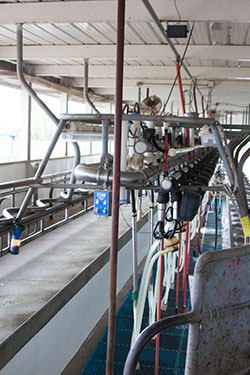 Last year went into the books as one of the best financial years for U.S. dairy farmers. However, as milk prices started to drop in November, balance sheets started coming closer to a breakeven point.
Last year went into the books as one of the best financial years for U.S. dairy farmers. However, as milk prices started to drop in November, balance sheets started coming closer to a breakeven point. "For the second half of 2015, it appears that corn, soybeans and wheat on the CME will be similar in price as it was at the end of 2014, but most other high-performance feeds will remain expensive or are going up further," reported the Frazer LLP certified public accountants and consultants in its annual analysis of its clients' dairy farm financial records. "If milk prices drop even further from what they are at the date of these reports (May 2015), net profit margins will quickly evaporate."
The Frazer LLP analysis covers regions in which the accounting firm conducts business with dairy farm clients. Due to the shear number of clients in California, the state is broken into three regions - Kern County, the San Joaquin Valley and Southern California. In addition, farm data is available for Arizona, Idaho, New Mexico, the Texas Panhandle and the Pacific Northwest.
Dairy producers in all eight regions had positive cash flows last year ranging from $1,377 per head in Idaho to $745 in New Mexico, which happened to be the only state under $1,000. On a hundredweight basis, the Texas Panhandle at $5.83 (presumably with a larger Jersey concentration) edged out Arizona's $5.76 and Idaho's $5.59 per cwt. returns. New Mexico represented the low point at $4.10.
Overall, feed costs were down, when comparing 2014 to 2013, in all regions except for Idaho. Texas feed costs fell $307 per head while New Mexico's $218 and Arizona's $177 were closely behind. Four other regions had reductions from $5 to $96 with Idaho being up $64 per head.
As would be suspected, higher margins caused replacement prices to skyrocket. Prices were up between $300 and $430 in five regions compared to a year earlier. These three replacement values stood as outliers:
• New Mexico, up $602 ($1,937 versus $1,335)
• California's San Joaquin Valley, up $654 ($1,906 versus $1,252)
• The Texas Panhandle jumped $1,107 ($2,549 versus $1,442).
For the complete Frazer LLP report, click here.








